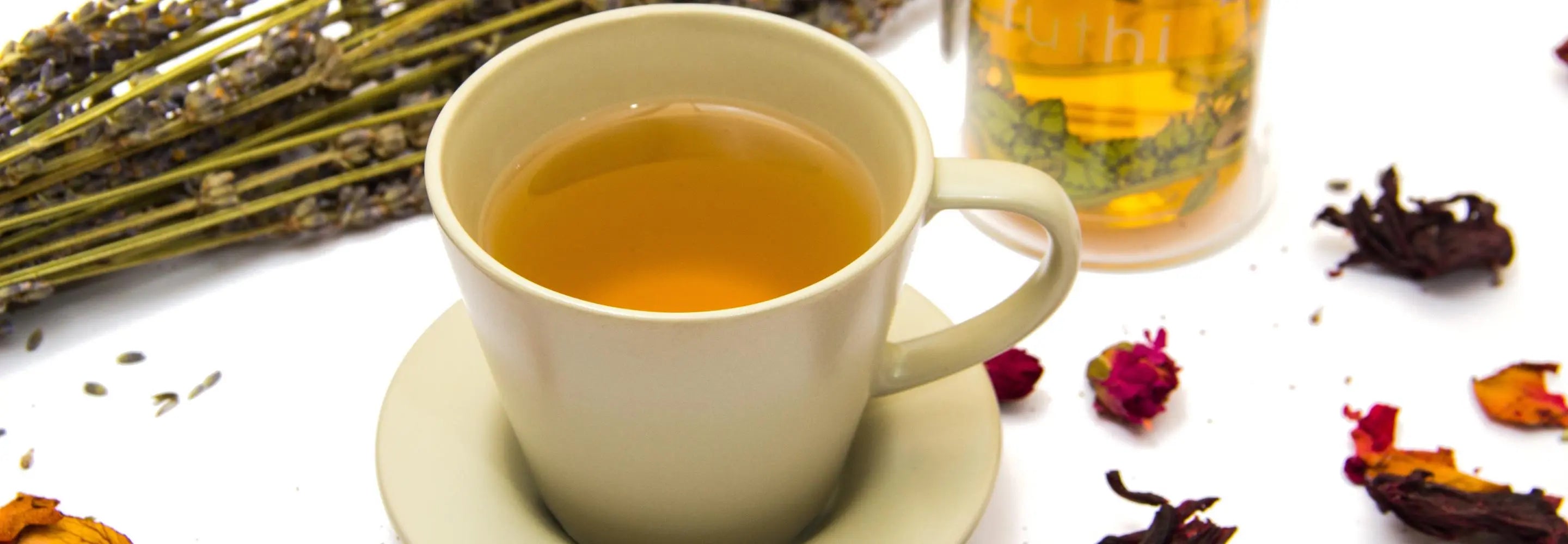Tea: since its discovery around 2700 BC, the drink has become the most widely consumed beverage in the world (after water). From the caffeine-rich varieties we sip in the morning to the calming cups we brew before bed, tea has forged a special place in our hearts and daily routines for thousands of years.
But, have you ever pondered on the origins of this versatile and well-loved beverage? How it traveled from China to practically every part of the globe? And what exactly is the difference between “tea” vs. “chai,” anyway?
From the legends of the first tea in ancient China to the development of a rich tea culture in Europe and the USA, tea tells a story that spans centuries and continents. So let’s dive in and learn about where tea originated, and how it traveled around the world to become a daily staple for so many people.
Where Did Tea Originate?

The birth of tea has been traced back to ancient China, where legends say it was first discovered by the emperor Shen Nung. The emperor was a dedicated herbalist who discovered the iconic drink by accident.
One day, as he was boiling water over a fire, a few leaves flew into the pot. After leaving the leaves there he eventually tasted the new concoction making him the first person to drink tea.
The earliest history of tea is tied to the development of Buddhism. Chinese monks turned to tea to help keep them focused and alert during their meditations. From those monasteries, tea traveled to all regions of China, eventually becoming a staple throughout the country.
This is when the culture around tea truly began to blossom. Ceremonies and literature around tea developed, and people began to grow a strong appreciation for cultivating and brewing tea. As people started to experiment with different varieties and brewing methods, tea-making became a highly regarded skill in China.
Tea Vs. Chai: What's The Difference?
In many English speaking countries, tea and chai are often thought of as entirely different drinks with different preparation methods. While tea refers to any beverage made by infusing water with leaves, flowers, fruits, and herbs, chai is a traditional preparation method from India that involves brewing tea leaves with a mixture of spices such as ginger, cloves, cinnamon, and pepper.
But around the world, these definitions are a little trickier. Nearly every major language uses either “tea” or “chai” (or a variation on one or the other) to refer to all tea beverages. The reasons why each country uses tea vs. chai is where things get really interesting!
The route that tea traveled to reach each country and the regional language differences within China are the factors that ultimately determined which word would be used! “Cha” (which would later turn into “chai” in many places) was predominantly used in the more inland regions of the country, while “te” was used in the coastal regions.
This linguistic phenomenon led to the split between tea and chai. When the drink traveled by sea, it became known as “tea” in the receiving countries. When it traveled by land via the Silk Road, it became “chai.”
How Tea Traveled To The United States
Trade routes spread tea throughout Europe during the early 17th century and it quickly became one of the most popular beverages by the 18th century, particularly in the United Kingdom.
Tea then made its way to the USA when the British introduced it to their colonies where it even played a major role in the American Revolution. The high taxes the British placed on tea led to the Boston Tea Party, which was the first major act of defiance the colonists made against Great Britain.
As tea continued to travel around the globe, the industry surrounding the drink evolved. The Industrial Revolution brought about new technology and techniques that made it possible to produce more tea for lower costs.
By the 20th century, the emerging global economy changed the tea industry yet again. Eventually people almost everywhere could enjoy diverse types of tea from around the world, including specialty teas that were previously inaccessible.
Nowadays, there are teahouses in most cities around the world, and hundreds of varieties available with just a quick trip to the grocery store.
After dipping into the complex history of tea, it’s easy to see how it became such a vital part of diverse cultures around the world! Next time you’re enjoying a cuppa, take a moment to reflect on the journey each leaf took on its way to your mug!











Share:
Sip, Sip, Hooray! A Brew-tiful Guide to the Best Coffee in the World
Love On The Go: A Guide to Planning Your First Trip Together